Boosting Team Performance Through Self and Team Insight - Online Course
Capacity to understand their role as a worker in a specific position within an organization. They develop insights into their place within the organizational structure and comprehend the internal dynamics of specific groups. Moreover, they acquire diverse strategies to manage potential conflicts within teams or groups effectively. Additionally, they can devise action plans aimed at boosting the overall performance of a team.
Apply Knowledge of Self and Team to Enhance Team Performance – Online Course
Develop the skills to analyze individual and team behavior, identify strengths and development areas, and create actionable plans that improve team performance. This course offers practical tools and frameworks to support self-awareness, team effectiveness, and collaborative planning in the workplace.
What Does It Mean to Apply Self and Team Knowledge?
Understanding yourself and your team is essential for building a high-performing team. This course explores how to assess personality types, working styles, and emotional intelligence to better manage team dynamics. You’ll learn how to interpret team feedback, identify areas for growth, and design a performance development plan that aligns with team goals and individual motivation.
Key topics include:
Self-assessment and personal development
Understanding team roles and responsibilities
Building trust and collaboration
Planning for team growth and performance improvement
Who Should Take This Course?
This course is valuable for:
Team leaders and supervisors
HR and learning & development professionals
Aspiring managers and project leads
Anyone responsible for improving team results or engagement
By the end of the course, you’ll be equipped with the skills to develop a targeted team development plan, apply insights from behavioral assessments, and foster a supportive and productive team environment.
Description
This unit standard required learners to reflect on the strengths and weaknesses of themselves and their teams to manage team performance. It is intended for managers of small businesses and junior managers of business units in larger organisations. The term business unit in this unit standard implies a small business, cost centre, section or department. Junior managers include, but are not limited to, team leaders, supervisors, first-line managers and section heads. The position is a term used to describe the first level of management in an organisation at which an employee has other employees reporting to him/her. The qualifying learner can understand him/herself as a worker in a specific position. Identifying own role in an organisation. Understanding the dynamics within a specific group. Using various strategies to deal with potential conflict in a team or group. Developing a plan of action to enhance team performance.
Course Content
Unit 1: Demonstrate knowledge and understanding of self as a worker in a specific work position
- Own strengths and weaknesses are identified based on self-reflection and feedback
- A personal development plan to strengthen one’s performance is compiled with a view to becoming a role model for a team or group
Unit 2: Identify your role in an organisation
- The organogram of an organisation is interpreted and an indication is given of the learner’s place in the organisation
- An organisation’s expectations of a person in the learner’s position are explained, and an indication is given as to how performance is monitored and measured
- The values and attitudes of a particular organisation are explored with reference to the organisation’s code of ethics or conduct
- The effect of the code of conduct on decisions a team leader may make is indicated with reference to the code of conduct of a specific organisation
Unit 3: Use a variety of strategies to deal with potential conflict in a team or group
- The kinds of conflict that could arise in a team or group are identified and strategies to deal with issues in a team are demonstrated in role-play situations
- Strategies for creating a positive working environment in a team or group are explored, and an indication is given of the role of the team leader in creating a positive work environment
- Situations that hamper efficiency in a group are identified, and suggestions are made to improve these situations
- Support systems available to the team are identified, and an indication is given of the learner’s role in being supportive and using a support system
Unit 4: Demonstrate knowledge and understanding of the dynamic within a specific group
- The strengths and weaknesses of a group or team are identified based on reflection and team performance
- The strengths and weaknesses of individuals within a group or team are identified in order to decide on an appropriate management strategy
- Situations that are a cause of concern or dissent in a group or team are identified and the plan is developed to minimise their negative effect on the team
- Positive situations in a group or team are identified and a plan is developed to maximise the effect on the team’s performance
Unit 5: Develop a plan of action to enhance the performance of a team
- Goals appropriate to the team are set in order to improve performance within a specific organisation
- A plan of action is developed as a means of achieving group or team goals
- The importance of consultation and joint decision-making in setting team or group goals is explained, and an indication is given of how a team can be involved in a goal-setting process
- Progress in the implementation of team goals is monitored, and an indication is given of when and how it may be necessary to amend the plan
Accreditation
- Non-accredited: Short course only
- Duration: 3h 00m
- Delivery: Classroom/Online/Blended
- Access Period: 12 Months


